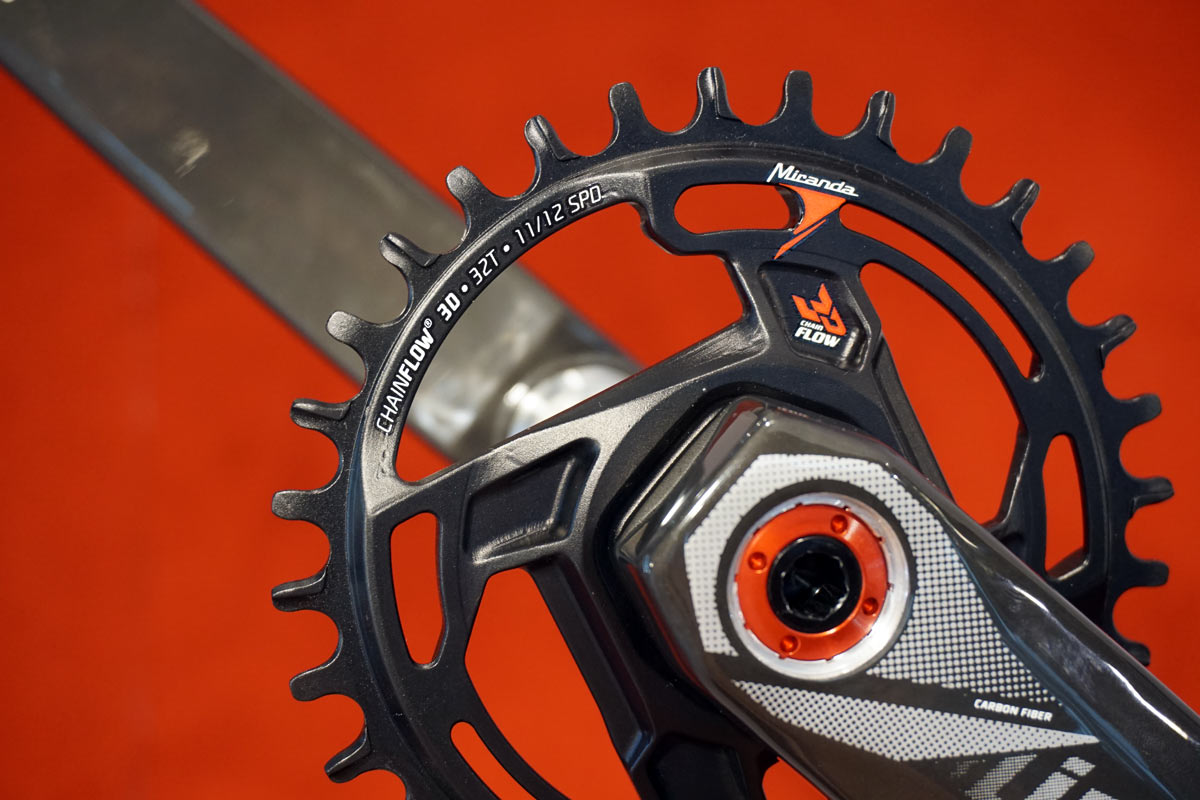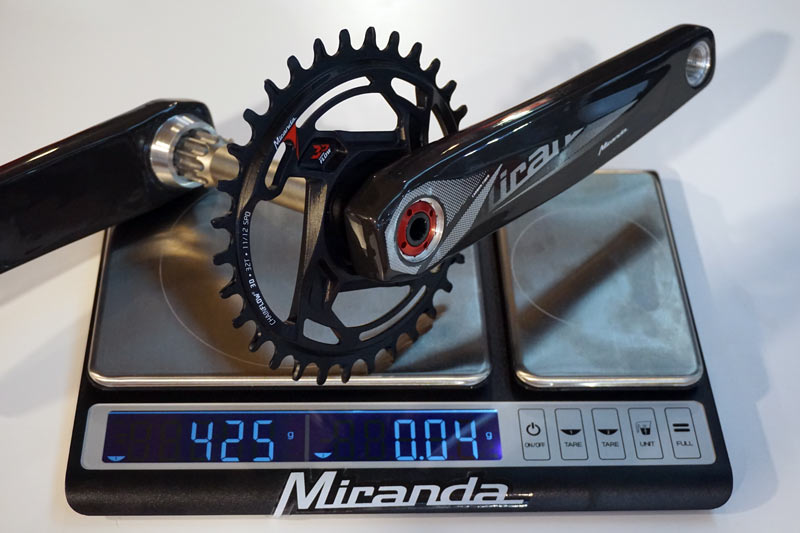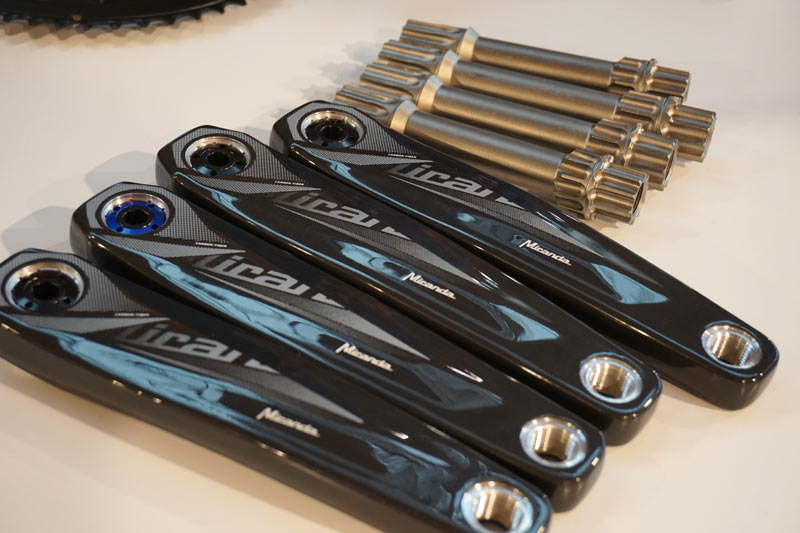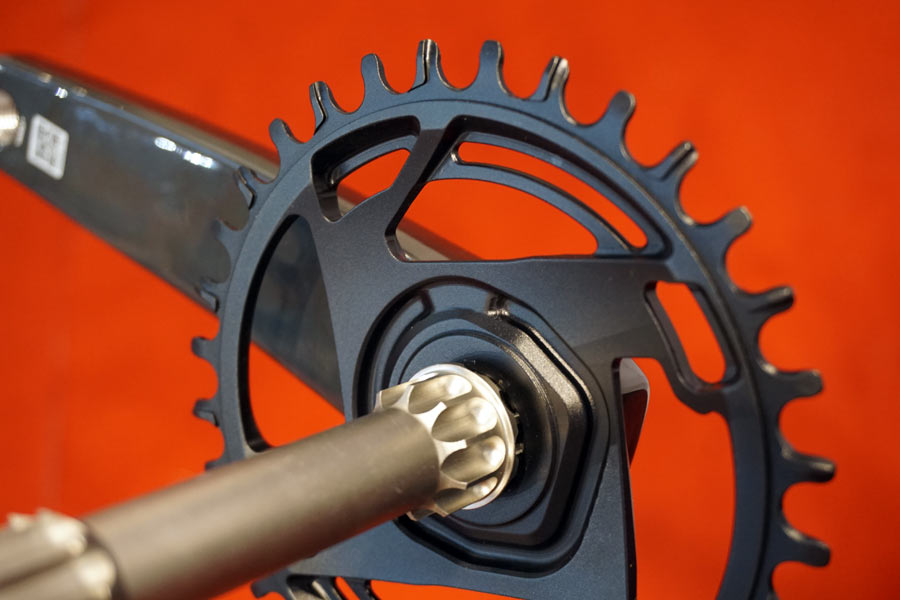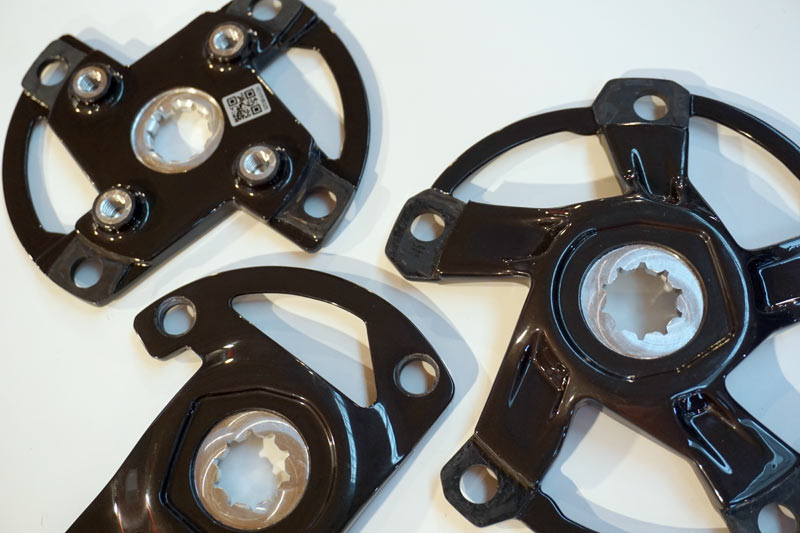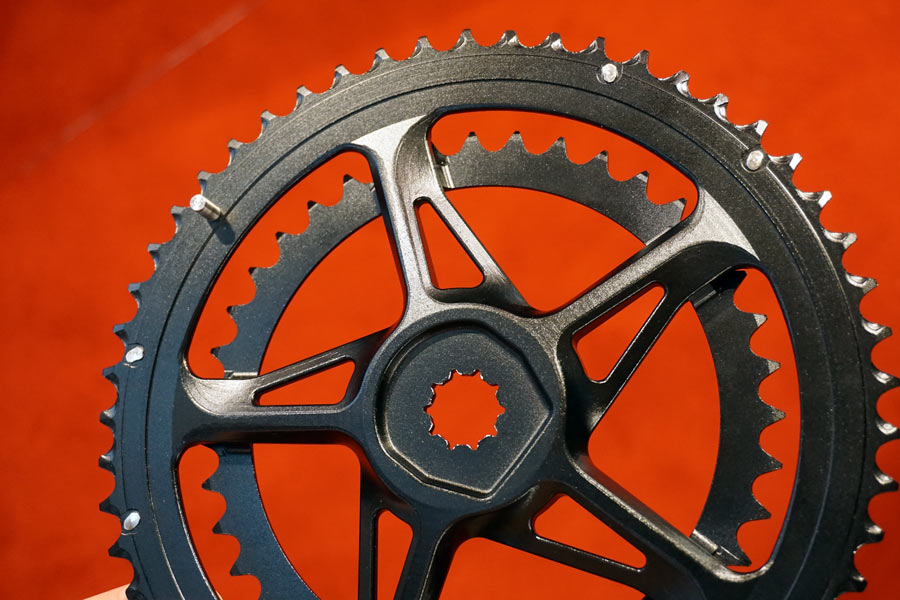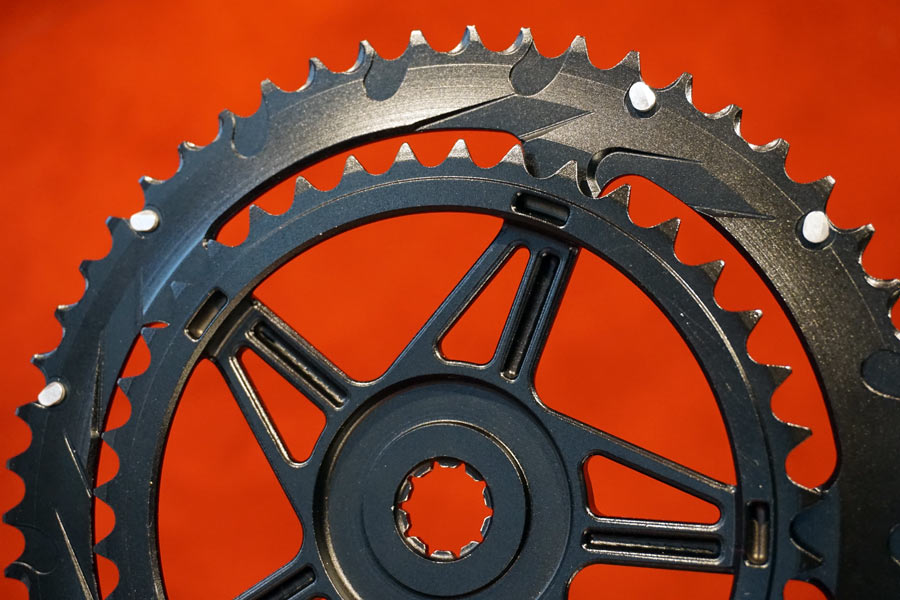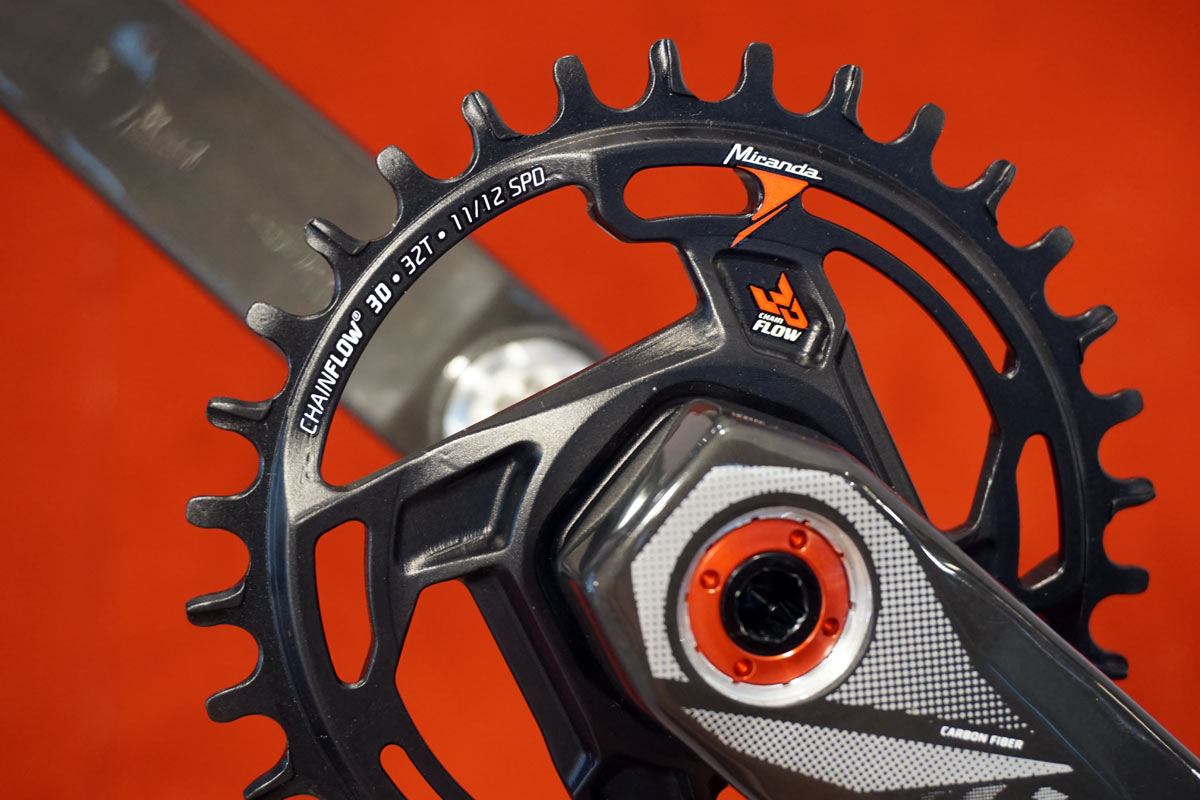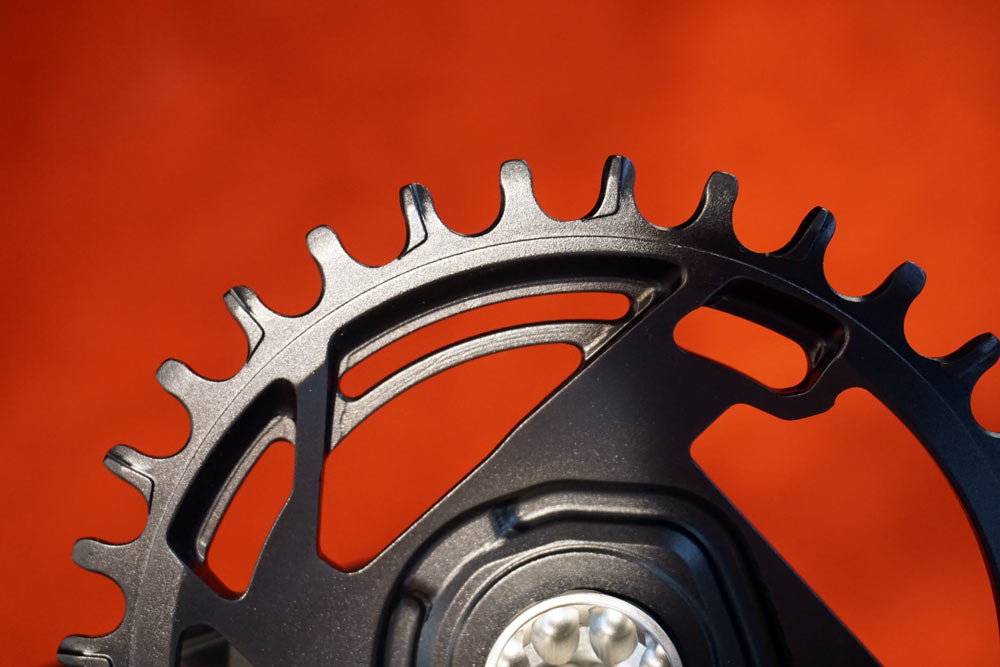The Miranda X-Mod crankset is already one of the lightest complete cranksets we’ve ever seen, and it’ss almost ready for production. They’ve been putting it through the wringer and say it’s rated for Enduro, tested on downhill. And the modular design means it’ll work just as well faor road, cyclocross and gravel bikes, too. Or fat bikes, thanks to various spindle widths. And crank arm lengths. Boost or not. There’s really no combination they’re not already planning or considering.
But they’re still trying to shave a few more grams off it…
They said the original prototypes were much lighter and their DH tester was happy, but they could tell the chainring was deflecting. So they made it more robust, but it’s still crazy light at just 425g with 170mm crank arms. Here’s how they got it there:
The hollow carbon arms use a proprietary composite wall running through the center, a design that they’re not ready to talk about in great detail. But it makes the arms stiffer and without adding significant weight.
The ti spindles machine channels out of the area where they rest in the bottom bracket bearings. So, yes, those finned sections are the connection point to the bottom bracket.
Why? They wanted to reduce as much as possible from the outside because they actually added more material on the inside edges. The tube walls at the threaded section where the crank arms are bolted on is thicker, which required them to switch to a smaller diameter bolt, but makes them much stronger.
The ti spindles come in appropriate lengths for Road, MTB, Boost MTB and Fat Bike, tapered to fit SRAM’s GXP 24mm/22mm standard. What’s unique about their set up is that they’re actually offering a Boost spaced spindle that pushes the drive side out 3mm. So, it’ll increase the Q-factor rather than simply using an offset chainring to adjust chainline.
They’ll retail for about $/€500, look for the first batch to start shipping in October. Aluminum arms will also be available, which are 160g heavier for the pair, but will be a lot cheaper. The system is so modular and easy to swap parts around that you could use the alloy arms for training and carbon for racing. Or just get one set of carbon arms and move them from bike to bike, varying the rings and spindles as necessary.
Carbon fiber spiders will come, too. They’re still part of the X-Mod system, so they mount directly to the spindle, then you can swap rings in as needed. Available in 4-arm for MTB and 4 and 5-arm for road. Both are standard BCDs, not need to create something proprietary when existing standards work just fine.
Or just get their one-piece double chainring, available in multiple tooth combos. And they’ll have more, as well as 1x options sized for cyclocross.
For now, their 1x chainrings are limited to 32/34/36 tooth counts. They use a new tooth profile called Chainflow 3D, which is a mix of their old version and new ideas. They say it’s the only chainring that guides the chain in three axes.
Chainflow 3D uses a deep valley between teeth, which is shaped to capture the chain’s pin and pull it forward. Every other tooth has a wide front-facing section, creating a T-shaped tooth, which mimics the chain retention of a narrow-wide tooth profile, but offers a much more open design to shed mud. That big, flat face also improves durability, reducing wear on the teeth.
So, circling back to weight. Miranda says they will likely machine a hole through the 1x chainrings where the recess sits (look at the Chainflow 3D logo two photos up, that’s the spot), and make other small nips and tucks. All in an effort to shave every gram possible without hurting performance.
